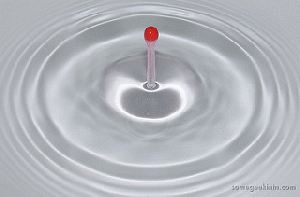A type of rubber manufactured by a Japanese electronics company called Ricoh is thin and stretchy, looking more like a flattened dried fruit snack than an electricity generator. The creators haven't divulged exactly what the rubber is made from, but they say it works off piezoelectricity, meaning the rubber generates an electric charge when mechanical energy gets exerted upon it.
Already Subjected to Extensive Testing
Ricoh says its mystery rubber could be used to power sensors, but the potential for the substance might be much more diverse. One day we could see it being used in everyday things such as light bulbs or refrigerators. The company is also not yet able to provide an estimate about when the material might be commercially available, but says it has already gone through millions of trial periods with it.
Piezoelectricity is Not a New Concept
Scientists are already well aware of how to harvest piezoelectricity. However, they admit there are many challenges to reaching the point where its power could be relied upon as heavily as something like battery power.
In World War I, piezoelectric materials were used in industrial applications to make submarine detectors. Then, in World War II, the technology was instrumental in coordinating massive air strikes. However, the scientists behind this new type of rubber say the substance is much more durable than previous types of piezoelectric technologies, which could potentially make it extremely versatile.
New Rubber Overcomes Many Piezoelectric Faults
Scientists are especially excited about the promise of this new, energy-generating rubber because they say many of the shortcomings associated with other piezoelectric applications don't come into play here. For example, ceramic is traditionally used as a piezoelectric material and often used to create sensors.
However, it's very fragile, heavy and contains lead, a toxic material. In contrast, this new rubber is resilient, lightweight and free from lead. Developers have even conducted stringent tests to verify the durability of the material.
Furthermore, polymers are often used as piezoelectric materials. However, the downside of them is the electric charge they characteristically generate is very slight. That's not the case with this new rubber, scientists say.
Generates Power in Two Ways
This innovative rubber makes electricity as it is stretched or contracted, but it can also create power when pressure is applied to it. Developers believe that's another perk that'll help it go above and beyond what other piezoelectric materials can do, even to the point of being used in large-scale applications.
Not the First Time Thin Rubber Has Been Used to Create Power
Since Ricoh has stayed tight lipped about how the rubber is made, we can only make guesses for now. However, as promising as this new technology seems, it's not entirely unique.
Back in 2010, engineers at Princeton University made rubber films that were powered as a person walked or even as he or she breathed. Those films were crafted from ceramic lead zirconate titanate nanoribbons that were embedded onto sheets made from silicone rubber.
(Note: You can view every article as one long page if you sign up as an Advocate Member, or higher).





